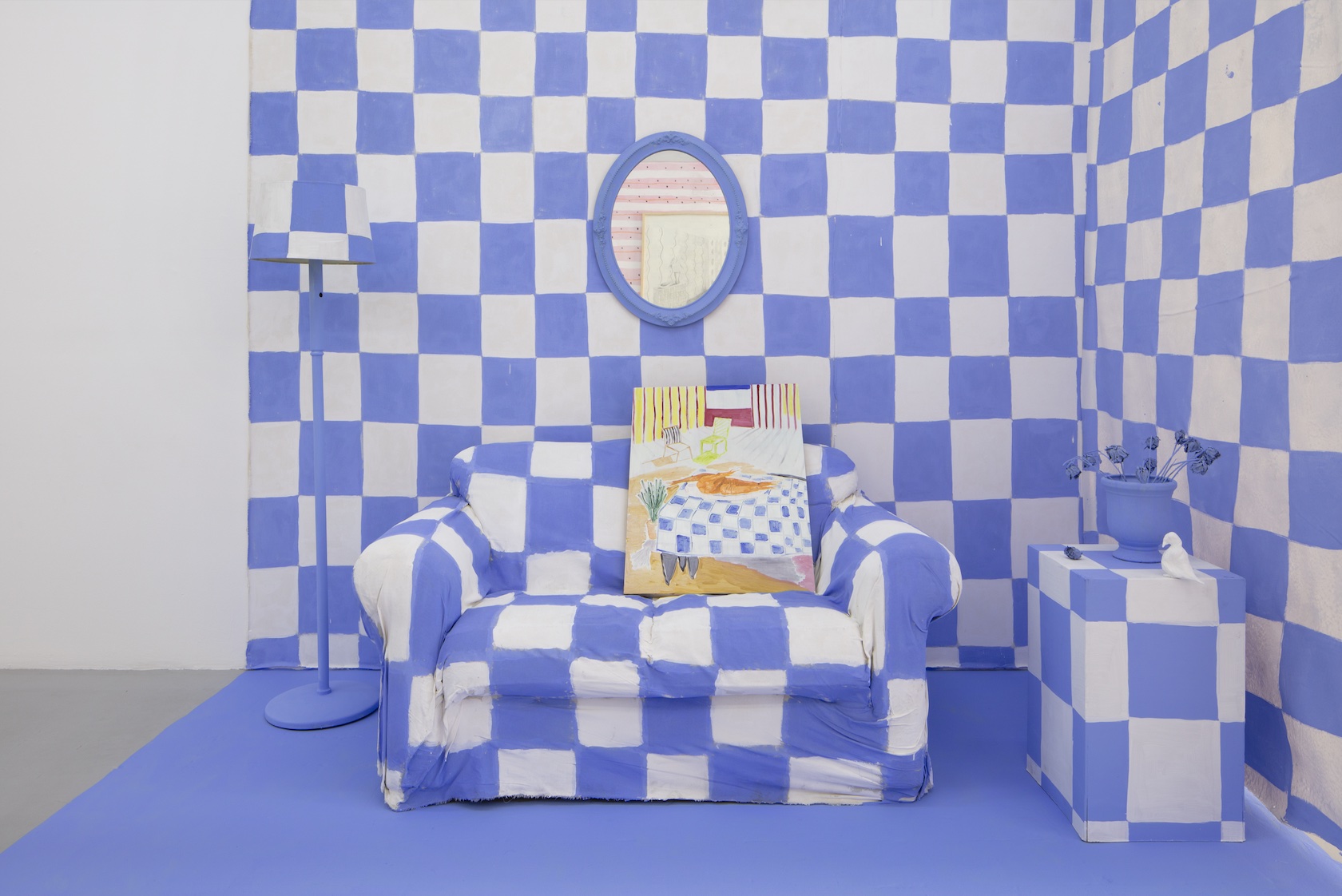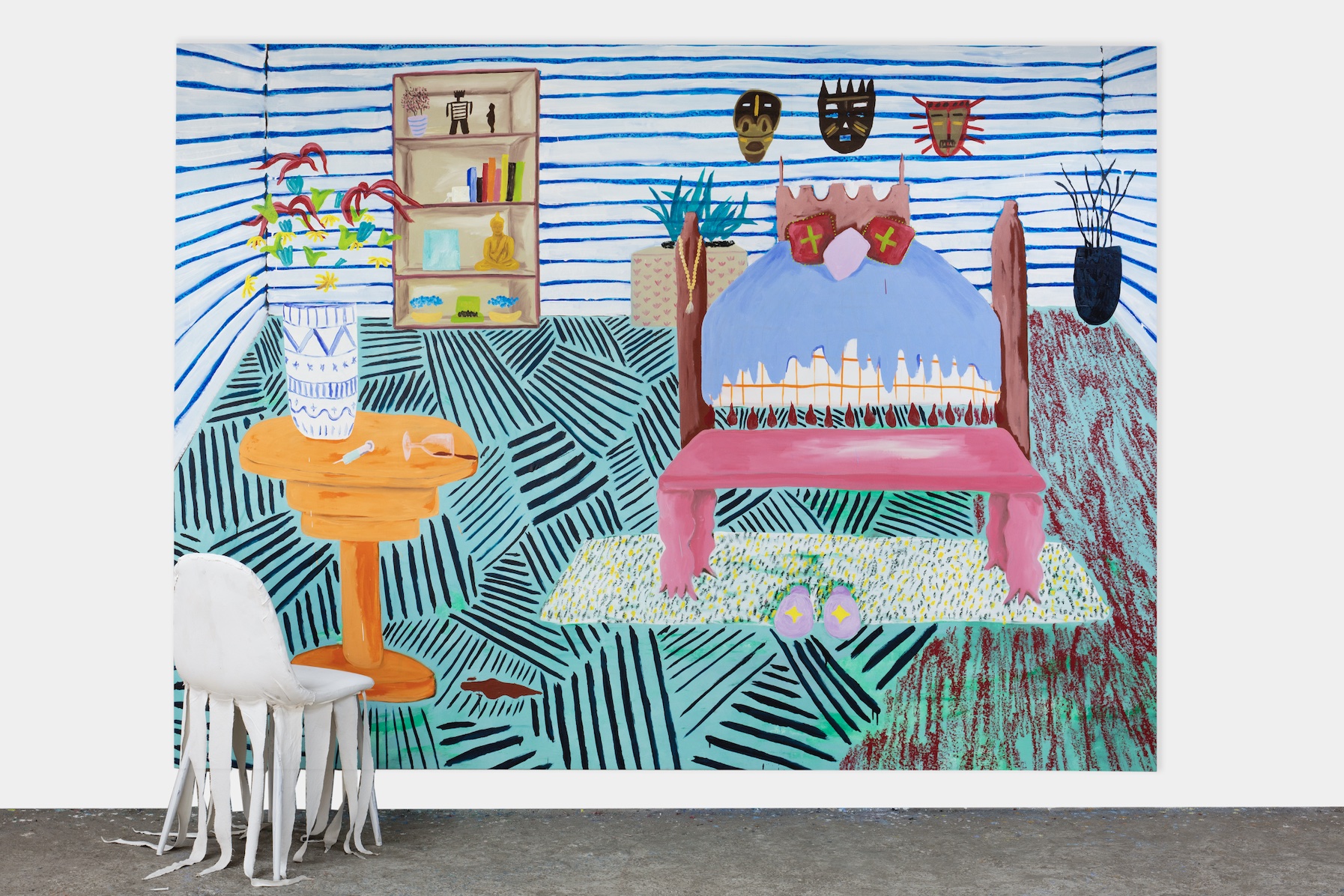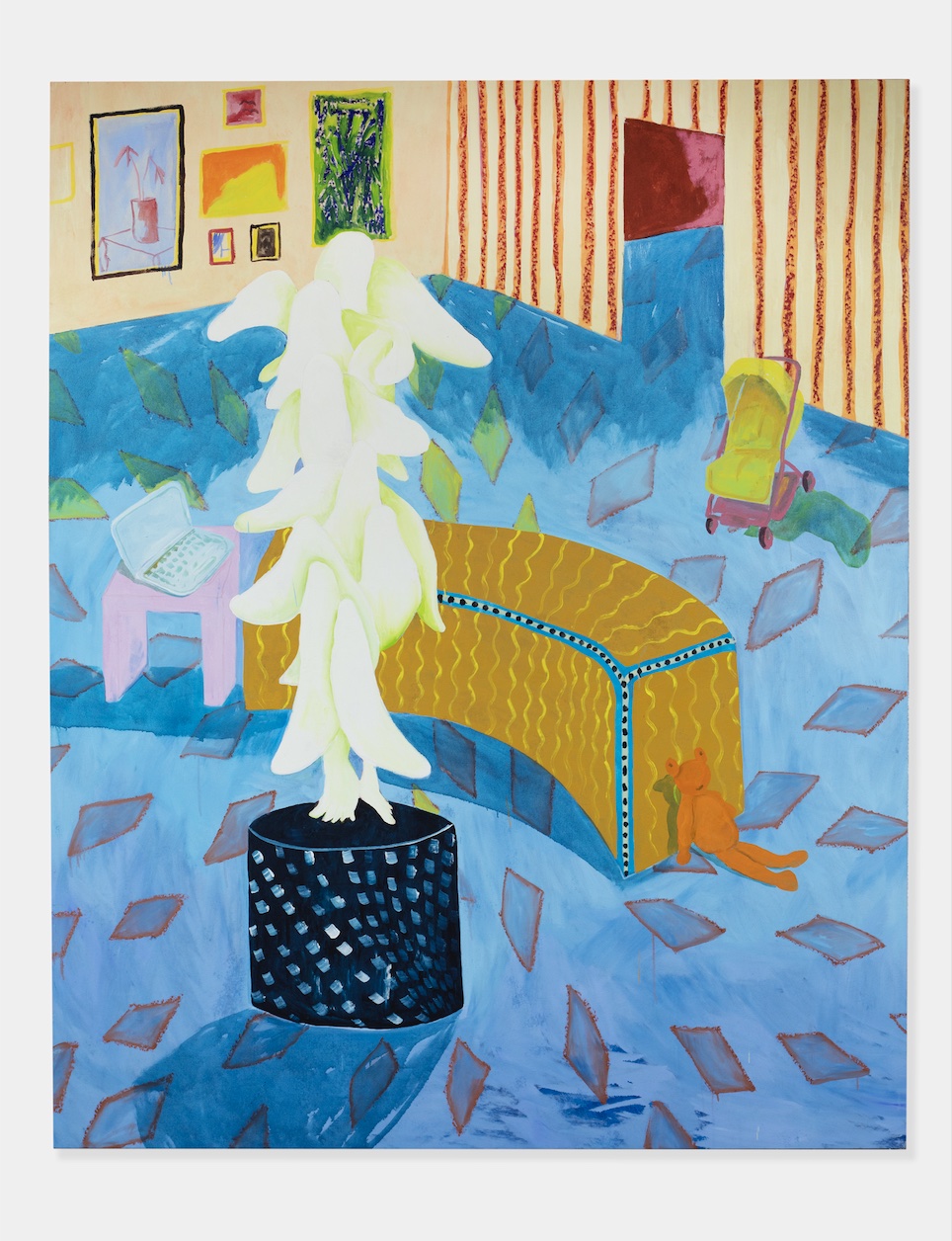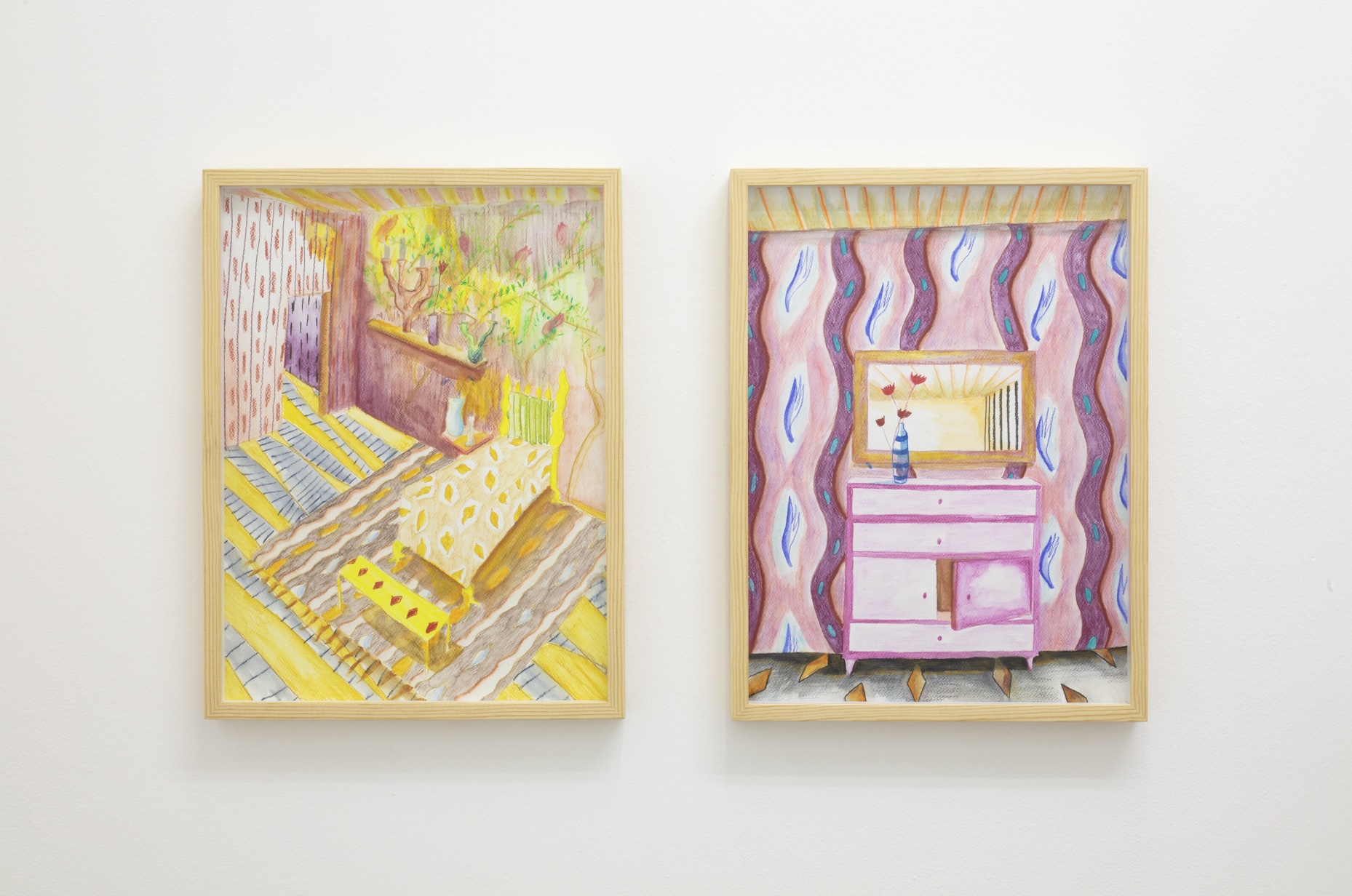
Review
To Alternate Color and Silence: On 'is anybody here?' by Manuel Forte at Karen Huber Gallery
by Bruno Enciso
Reading time
4 min
Manuel Forte, a Portuguese artist based in Mexico City, presents his first solo exhibition at Karen Huber Gallery. The show features works in various formats, combining painting, drawing, sculpture, and installation. The thematic axis is easily identifiable: rooms, interiors, and domestic spaces. Although this premise suggests a certain restraint, these works do not allow for a calm or restful vision. Instead, Forte sets in motion hyper-stimulating dynamics for both the eyes and the body, demanding an active and engaged perception. Entering these rooms means waking up and shaking off lethargy, prepared to react nimbly to shifts in gravity and speed. The challenge is to navigate these visual spaces at a steady pace, while maintaining a sense of calm.

What stands out most about this body of work is its vibrant and singular approach to the labyrinthine. Forte doesn’t explore labyrinths in the architectural sense—where an intricate layout requires a specific exit—but rather through a sense of disorientation that can evoke variations of anxiety. The color palettes and figures in the paintings maintain a diurnal and stable atmosphere, with realistic perspectives and objects of ordinary proportions. Yet, an unsettling aftertaste lingers, as questions arise about what has happened in these spaces. At first, they seem concerned with real people and events, located in the same time and space as the viewer. Then, the sounds of living and dead animals introduce an absurd tone. Collections of items and symbols shift from portraying subjectivity to suggesting abandonment. We realize the flowers in the vase have wilted; the inhabitants of these spaces are now mere ghostly speculations.

Patterns are also significant. Forte has opted to reduce the idea of a pattern to its most basic form: a motif and its repetition. Spots and scratches, produced with varying degrees of care and harmony, expand the zones of meaning, sometimes emphasizing the stroke, other times the color that covers them. Some patterns are resolved so simply that they exude a sense of carelessness; formally, they flatten the surface excessively. While this effect may be intentional, it doesn’t enhance the sense of livability central to the work. Nevertheless, the interplay of multiple planes prevails and thrives on its variety. By the time the sense of unease arrives, the patterns no longer seem to work together or complement each other decoratively. Instead, each one becomes a distinct, anxious flow, competing for space.

One standout piece is White Ferrari (2024), featuring a curious humanoid sculpture standing on a cylindrical platform. Its "body" is shaped by a series of protuberances resembling an impossible bunch of bananas, though they could also be limbs. There is no head, but it has a pair of small feet. The diamond pattern on the bluish ground beneath the figure underscores its presence like piranhas swimming toward prey. In the background, a collection of paintings depicts flowers and abstract compositions. Scattered throughout the scene are a stroller, a computer, and a blind plush pet. The idea of a painting and human-scale sculpture coexisting in a domestic space is a bold, playful proposition. Here, we also find accessories semantically linked to childhood. What, then, is the function of the pieces, of the art, in this fantasy? The sculpture emits a strange, acid-green glow, shining despite the surrounding colors. Is the light emanating from the sculpture, the paintings, or the laptop screen? Should we worry about the whereabouts of the child or children playing with the teddy bear?
There is something captivating about the way the multiplicity of architectural and chromatic planes in these pieces form a kind of patchwork that defines the richness and flavor of the entire exhibition. However, the irregularity in pacing between works leads to some

areas feeling either too raw or overly intense. This temporal irregularity can be narratively intriguing if we consider that the presences haunting these rooms have just left or are yet to arrive. The point is that the small rooms on paper are traversed differently than those on canvas. A mirror in a room immersed in a pastel blue and white grid confronts me with my own reflection, while a tear on the white wall across the room reveals a gradient shifting from yellow to purple—a strange trace of transmutation, with no figure to inhabit it. This variety of formal solutions showcases the artist's plastic versatility, but it can result in a fragmented experience, where the effects of one work haven't fully resonated before others are activated. Certain enigmas should be allowed to unfold at their own pace, without interruption.
The exhibition is on view through September 7th.
Translated to English by Luis Sokol
Published on August 22 2024